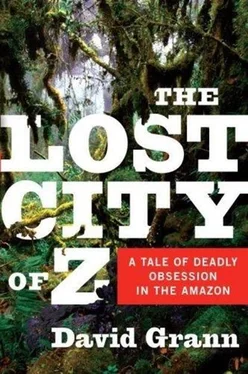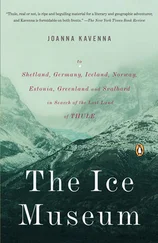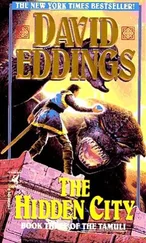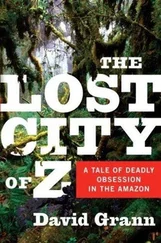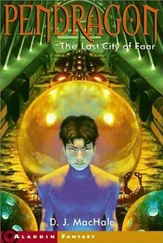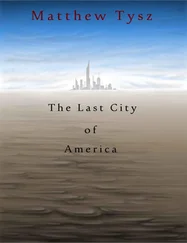Paolo was sitting in the shade of the nearest hut. “I'm sorry I didn't go back for you,” he said. “I didn't think I could make it.” His vest was draped around his neck, and he was sipping water from a bowl. He handed the bowl to me, and though the water hadn't been boiled, I drank it greedily, letting it spill around my neck.
“Now you have some kind of real picture in your mind of what it was like for Fawcett,” he said. “Now we go home, no?”
Before I could reply, a Kuikuro man came and told us to follow him. I paused for a moment uncertainly, then walked with him across the dusty central plaza, which was some two hundred and fifty yards in diameter- the largest one, I was told, in the Xingu. Two fires had recently swept through the huts along the plaza's perimeter, the flames leaping from one thatched roof to the next, leaving much of the settlement in ashes. The Kuikuro man paused outside one of the surviving homes and told us to enter. Near the door, I could see two magnificent clay sculptures-one of a frog, the other of a jaguar. I was admiring them when an enormous man stepped out of the shadows. He was built like Tamakafi, a mythical Xin-guano fighter who, according to legend, had a colossal body, his arms as thick as thighs, his legs as big as a chest. The man wore only a thin bathing suit, and he had a bowl haircut that somehow made his stern face seem even more imposing.
“I am Afukaká,” he said, in a surprisingly soft, measured voice. It was clear that he was the chief. He offered Paolo and me lunch-a bowl of fish and rice-which his two wives, who were sisters, served us. He seemed interested in the outside world and asked me many questions about New York, about the skyscrapers and restaurants.
As we spoke, a sweet serenading sound filtered into the hut. I turned to the door as a group of women dancers and men with bamboo flutes entered. The men, who were naked, had covered their bodies with elaborate painted images of fish and tortoises and anacondas, the shapes weaving along their arms and legs, the orange and yellow and red colors gleaming with sweat. Around the eyes of most of them were black circles of paint, which resembled masks at a costume party. Their heads were topped with large, colorful feathers.
Afukaká and Paolo and I stood as the group crowded into the hut. The men stepped forward twice, then back, then forward again, all the time blowing their flutes, some of which were ten feet long-beautiful pieces of bamboo that released humming tones, like wind catching an open bottle top. Several young girls with long black hair danced alongside the men, their arms slung over the shoulders of the person in front of them, forming a chain; they, too, were naked, except for strings of snail shells around their necks and a bark-cloth triangle, or uluri, that covered their pubic area. Some of the pubescent girls had recently been held in seclusion, and their bodies were paler than those of the men. Their necklaces rattled as they stamped their feet, adding to the insistent rhythm of the music. The group circled us for several minutes, then ducked under the doorway and disappeared into the plaza, the sound of the flutes fading as the musicians and the dancers entered the next hut.
I asked Afukaká about the ritual, and he said that it was a festival for fish spirits. “It is a way to commune with the spirits,” he said. “We have hundreds of ceremonies-all beautiful.”
After a while, I mentioned Fawcett. Afukaká echoed almost precisely what the Kalapalo chief had told me. “The fierce Indians must have killed them,” he said. Indeed, it seemed likely that one of the more warlike tribes in the region-most likely the Suyás, as Aloique had suggested, or the Kayapós or the Xavante-had slaughtered the party; it was improbable that all three Englishmen would have starved to death, given Fawcett's talent for surviving in the jungle for long periods. But that was as far as the evidence led me, and I felt a sudden resignation. “Only the forest knows all,” Paolo said.
While we were talking, a curious figure appeared. His skin was white, although parts of it had been scalded red from the sun, and he had scruffy blond hair. He wore baggy shorts and no shirt and carried a machete. It was Michael Heckenberger. “So you made it,” he said with a smile, looking at my drenched, dirty clothes.
It was true what I had been told: he had been adopted by Afukaká, who had built him a hut right next to his own home. Heckenberger said that he had been doing research here on and off for the last thirteen years. During that time, he had battled everything from malaria to virulent bac teria that made his skin peel off. His body was also once invaded by maggots, like Murray's. “It was kind of horrifying,” Heckenberger said. Because of the prevailing notion that the Amazon was a counterfeit paradise, most archaeologists had long ago abandoned the remote Xingu. “They assumed it was an archaeological black hole,” Heckenberger said, adding that Fawcett was “the exception.”
Heckenberger knew the story of Fawcett well and had even tried to conduct his own inquiry into his fate. “I'm fascinated by him and what he did in that time period,” Heckenberger said. “He was one of these larger-than-life figures. Anyone who would jump in a canoe or march in here at a time when you know some of the Indians are going to try to-” He stopped in mid-sentence, as if contemplating the consequences.
He said that Fawcett was easy to dismiss as “a crank;” he lacked the tools and the discipline of a modern archaeologist, and he never questioned the shibboleth that any lost city in the Amazon had to have European origins. But even though Fawcett was an amateur, he went on, he was able to see things more clearly than many professional scholars.
“I want to show you something,” Heckenberger said at one point.
Holding his machete in front of him, he led Paolo, Afukaká, and me into the forest, cutting away tendrils from trees, which shot upward, fighting for the glow of the sun. After walking for a mile or so, we reached an area where the forest thinned. Heckenberger pointed to the ground with his machete. “See how the land dips?” he asked.
Indeed, the ground seemed to slope downward for a long stretch, then tilt upward again, as if someone had carved out an enormous ditch.
“It's a moat,” Heckenberger said.
“What do you mean, a moat?”
“A moat. A defensive ditch.” He added, “From nearly nine hundred years ago.”
Paolo and I tried to follow the moat's contours, which curved in a nearly perfect circle through the woods. Heckenberger said that the moat had originally measured between a dozen and sixteen feet deep, and about thirty feet wide. It was nearly a mile in diameter. I thought of the “long, deep ditches” that the spirit Fitsi-fitsi was said to have built around settlements. “The Kuikuros knew they existed, but they didn't realize that their own ancestors had built them,” Heckenberger said.
Afukaká, who had helped with the excavation, said, “We thought they were made by the spirits.”
Heckenberger walked over to a rectangular hole in the ground, where he had excavated part of the moat. Paolo and I peered over the edge with the chief. The exposed earth, in contrast to other parts of the forest, was dark, almost black. Using radiocarbon dating, Heckenberger had dated the trench to about A.D. 1200. He pointed the tip of his machete to the bottom of the hole, where there seemed to be a ditch within the ditch. “That's where they put the palisade wall,” he said.
“A wall?” I asked.
Heckenberger smiled and went on, “All around the moat, you can see these funnel shapes, equally spread apart. There are only two explanations. Either they had traps at the bottom or they had something sticking into them, like tree trunks.”
Читать дальше
Конец ознакомительного отрывка
Купить книгу
